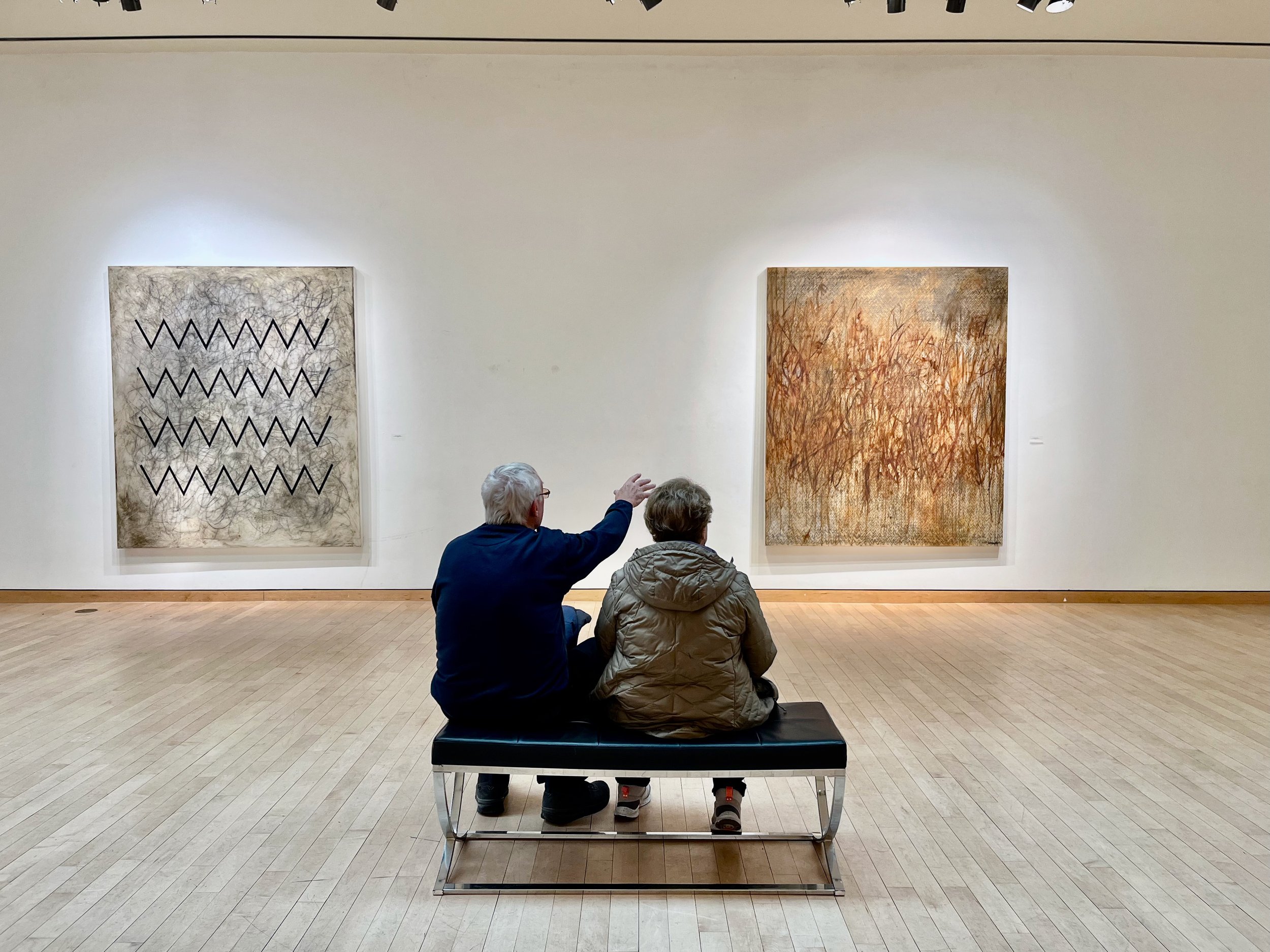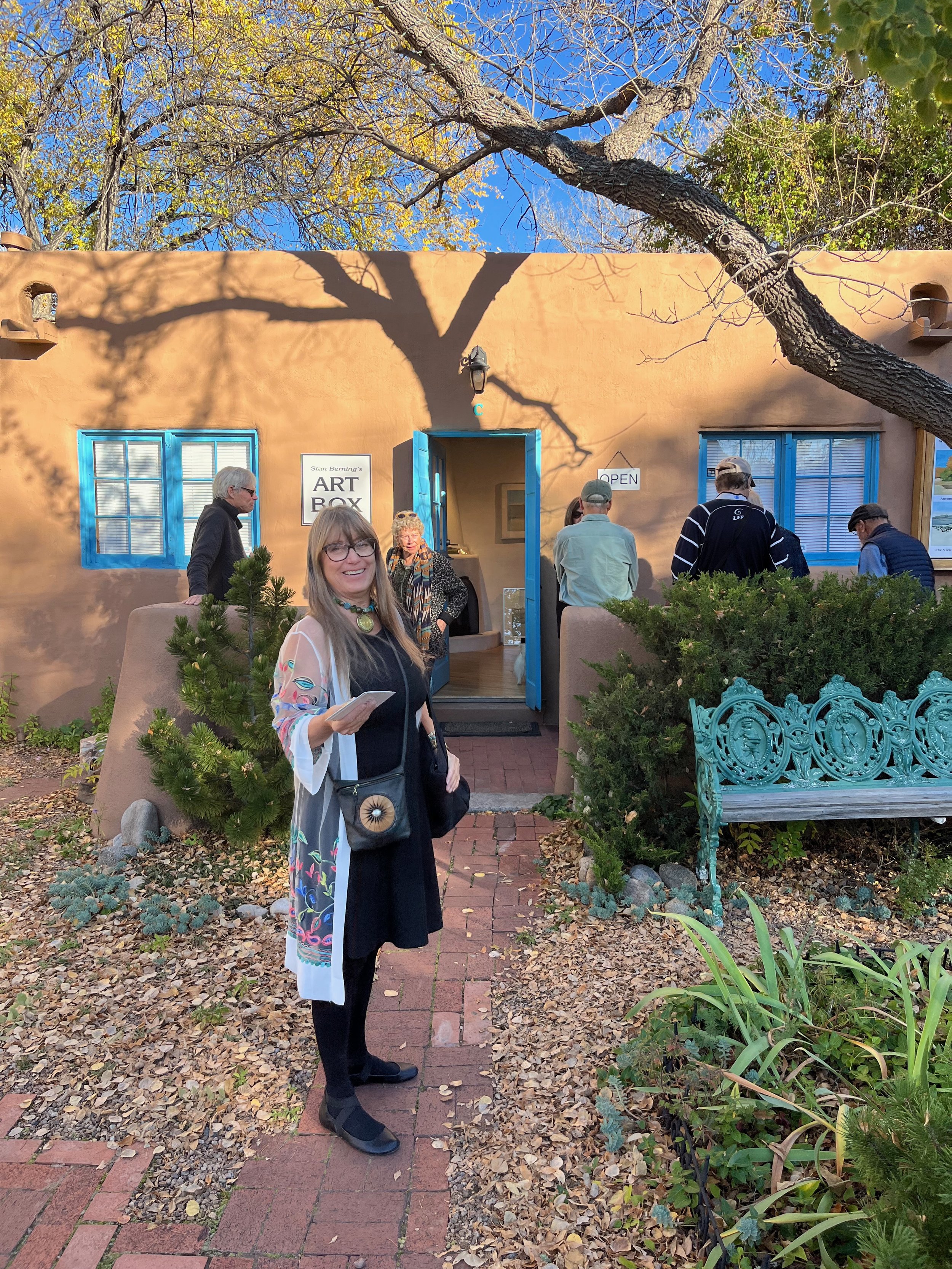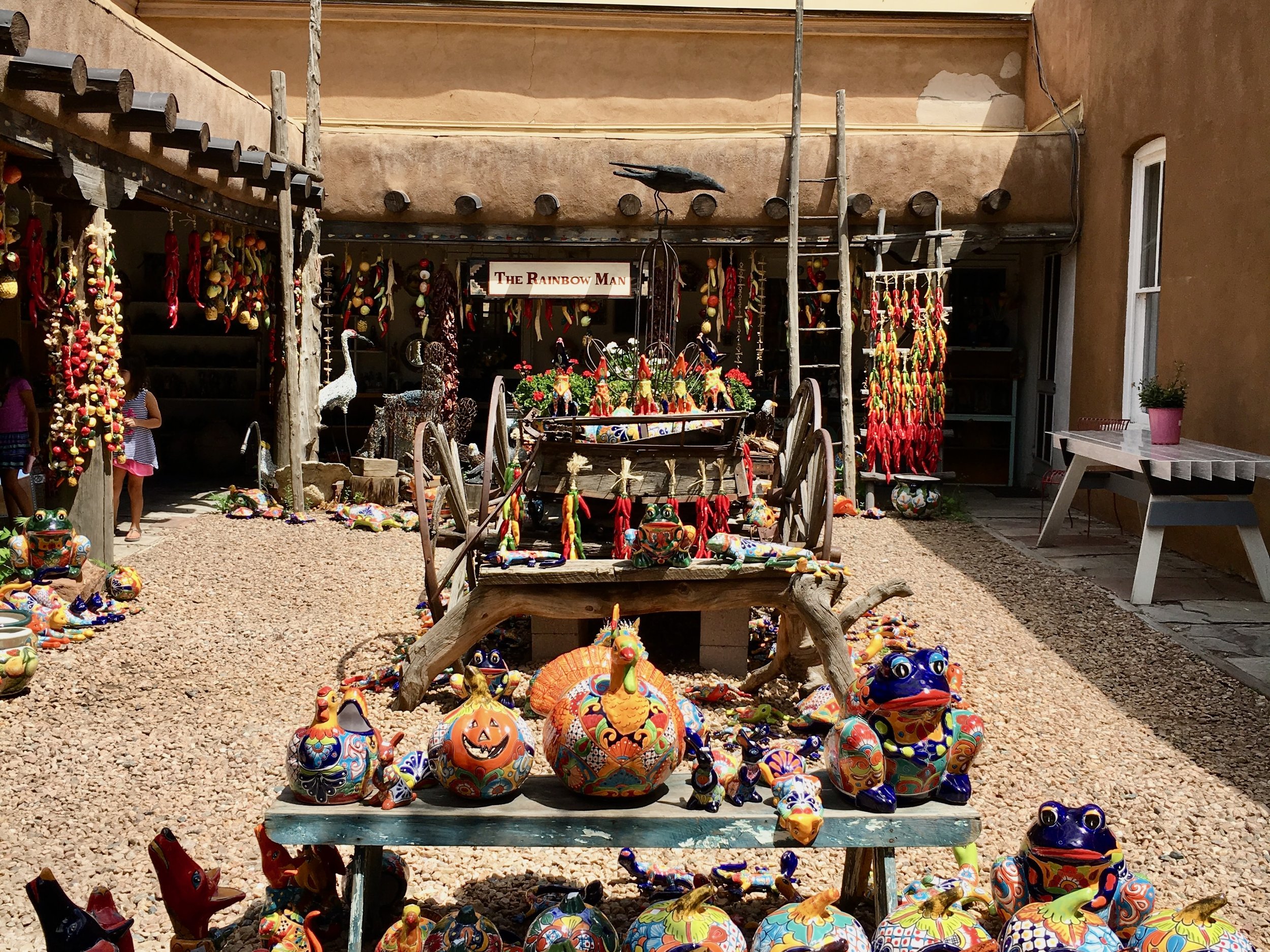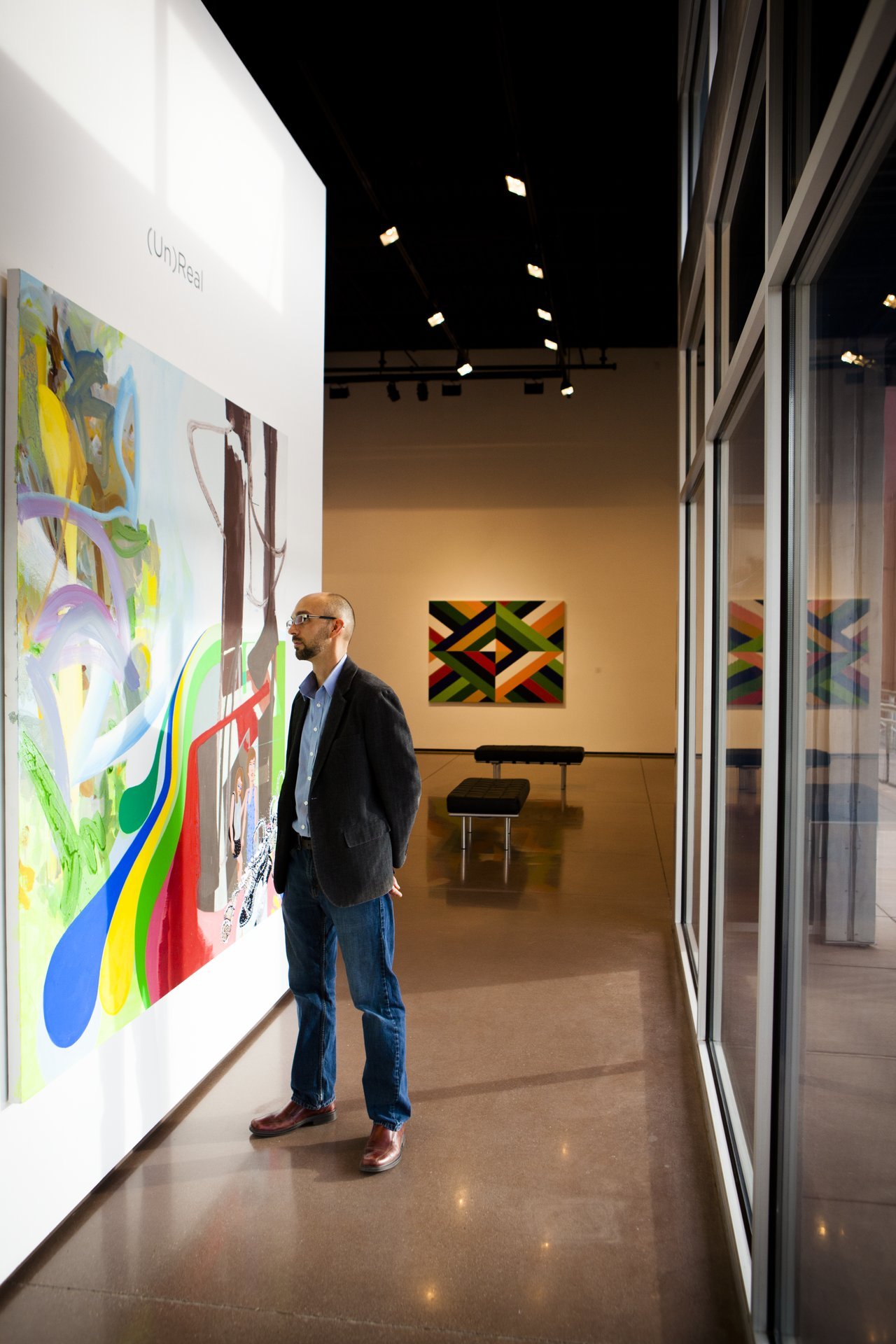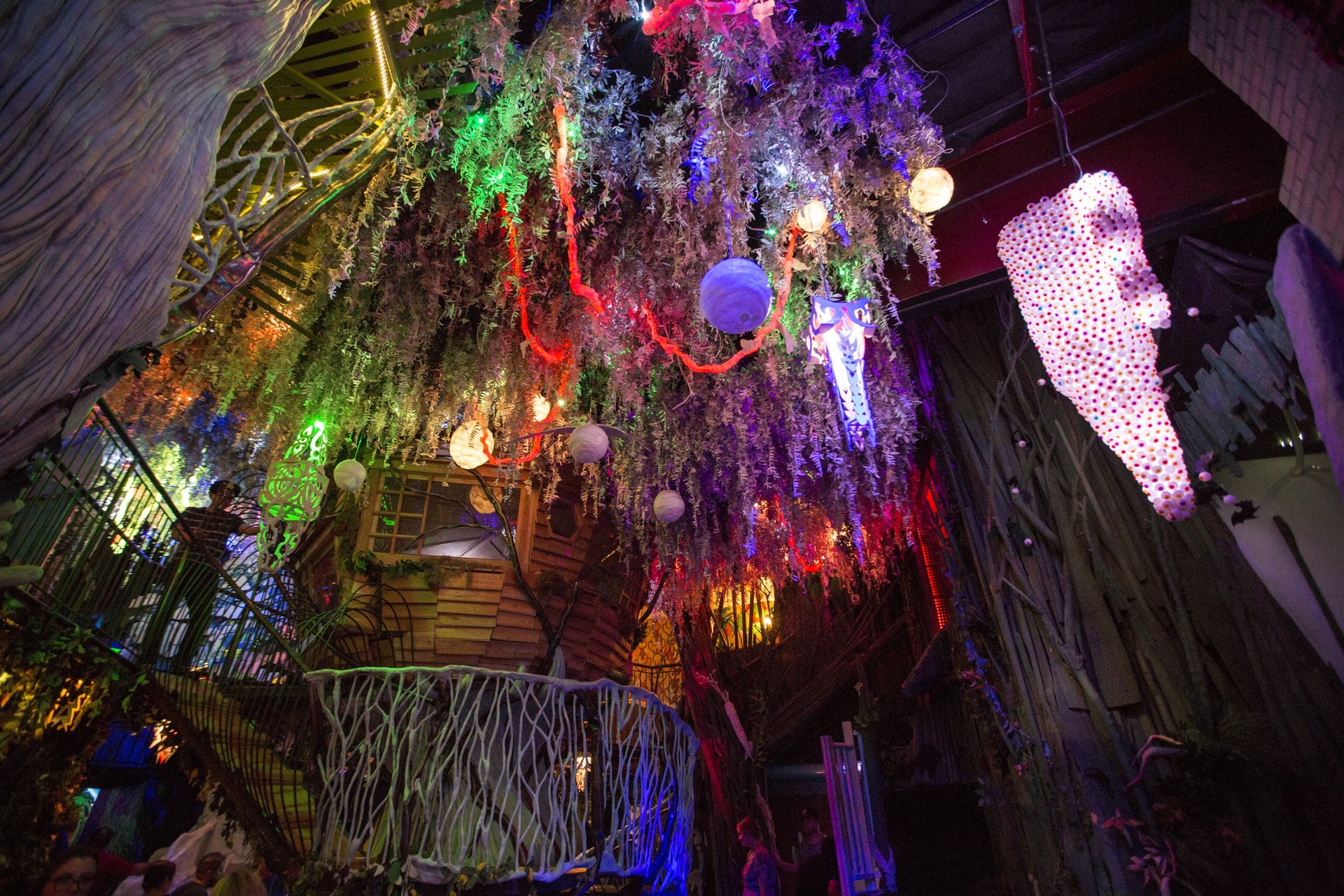A quick guide to Santa Fe’s art districts
A huge draw to Santa Fe is its incredible art scene. Santa Fe hosts art fairs and festivals throughout the year, and it’s home to over 12 museums and hundreds of galleries. Santa Fe is the third largest art market in the US after New York and LA, and it has the highest concentration of galleries of any city its size. And most of those galleries are packed within a two-mile radius, making it an incredible destination for art enthusiasts to explore on foot.
Here’s a brief overview of Santa Fe’s arts districts, but each one is worth exploring in depth while you’re here.
Canyon Road
Canyon Road is perhaps Santa Fe’s most famous art district, and understandably so. It’s been a hub for creative types since the early twentieth century, and as home to over 80 galleries, it makes for fun outing that appeals to almost everyone. There is truly no other place like it in the country. It’s incredibly atmospheric, stunningly photogenic, and the variety of art experiences offered there is staggering. This is the place to go if you feel like wandering through a beautiful area while taking in some historic architecture and seeing everything from historic artwork to contemporary abstraction.
We previously shared five reasons to love Canyon Road, as well as some Canyon Road history, so check out that post for more information about this beautiful neighborhood.
The Plaza
The area around Santa Fe’s historic Plaza is perhaps more well known for its retail shops and restaurants than its galleries, but it’s actually home to quite a few fabulous art spaces. You just have to poke around a bit and maybe even venture up a staircase or two to find some tucked-away venues.
In the Plaza area, you’ll find lots of figurative artwork that's a bit more traditional in style, but in a good variety of media. There are some excellent galleries for painting and sculpture in the area. Other spaces specialize in art jewelry, pottery, and photography. There are also several fantastic museums in the Plaza area, including the New Mexico Museum of Art, the Georgia O’Keeffe Museum, and the Museum of Contemporary Native Arts.
As you explore the Plaza, don’t forget to wander up Lincoln to Marcy, a pretty little street that’s filled with more galleries (a few of which specialize in New Mexican modernism), specialty shops like Design Warehouse and cute eateries such as La Boca. It’s just a tiny bit off the beaten path, though, so visitors often miss it.
Local tip: new public restroom facilities are located at 123 E Water St. Public restrooms are sparse in Santa Fe, so use ‘em when you can.
The Railyard
The Railyard Arts District, part of the historic Santa Fe railyard, is home to several galleries. Most of these are housed in sleek, warehouse style spaces evocative of the Railyard’s industrial past. And as you might guess, the work is largely contemporary and often a bit sleeker and edgier than what you might find on the Plaza and Canyon Road.
Many of the buildings in the Railyard are newer, so they are wheelchair accessible, while some of the historic buildings in the Plaza area and on Canyon Road are not.
The Santa Fe Railyard is also home to SITE Santa Fe, a cutting-edge space dedicated to contemporary artwork, as well as the Jean Cocteau Cinema, owned by George R R Martin, and the Violet Crown Cinema, which provides a posh movie-going experience (think smaller theaters, comfier seating, a full menu, and beer and wine on tap).
Finally, the Railyard is also where you’ll find the famed Santa Fe Farmers’ Market, where locals and visitors flock each week to pick up produce, chile, and other souvenirs.
Local tip: Again, restrooms are important! Look for them at the Farmers’ Market pavilion during market hours. Don’t miss the Railyard Park, and be sure to check out the events calendar to see what’s happening while you’re in town.
Baca Street
Technically an extension of the Santa Fe Railyard, the Baca street area was once a coal and fuel storage yard for the Denver & Rio Grande and New Mexico Central railways. Today part of the neighborhood retains much of that industrial feel, with airy warehouse-style structures that now house shops, restaurants, studios, and other retail spaces. Further north, Baca Street is mostly residential and lined with historic adobe homes.
There aren’t as many art spaces here as there are on Canyon Road, the Santa Fe Plaza, or even in the Railyard, but you will find a bit of everything: glass blowing at Liquid Light Glass (try to catch a demo if you go – it’s pretty mesmerizing!), hands-on classes and workshops at Baca Street Pottery, unique vintage clothing and local artwork at Art.i.fact, and tasty eats at Counter Culture Cafe.
Siler Rufina Nexus
Yet another area that was once largely industrial, the neighborhood near the intersection of Siler Road and Rufina Street has recently seen an influx of arts spaces and creative projects. Meow Wolf has everyone talking about The House of Eternal Return, an interactive art installation that feels a bit like a psychedelic funhouse. The project was backed by George R R Martin and combines arts and entertainment in a super creative way: the installation doubles as a venue for world-class musicians.
Guests on tours often ask me if Meow Wolf is worth a visit. The short answer: probably. It’s definitely unique, and if you’re up for a wild experience, go for it! You could at least squeeze in a short visit. While many people spend hours exploring the installation, I always find an hour to be plenty. Talk about sensory overload! If you’re visiting with kids, they’ll definitely love it, although the experience may be a bit much for younger children. If you’re visiting with a group of adults, they’ll enjoy it, too. However, if you’re not into crowds, climbing around, or psychedelic colors, you may want to stick to Santa Fe’s more traditional arts venues.
The Siler-Rufina district is also home to 5. Gallery, the Adobe Rose Theater, and Teatro Paraguas, along with several eateries including Duel Brewing and the Rufina Taproom.
Have fun exploring!

